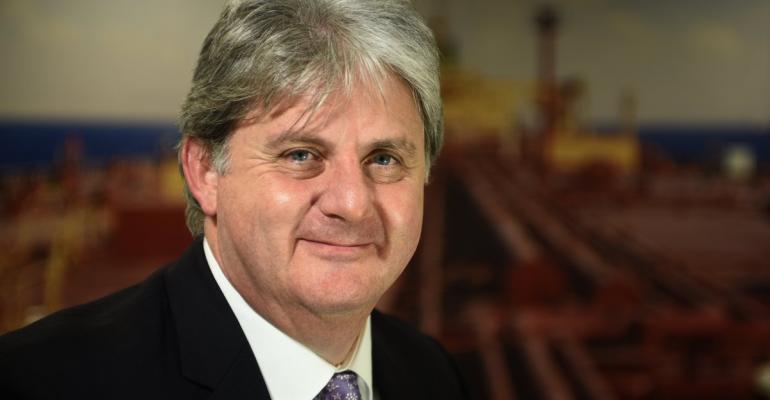UK-based Coldharbour’s BWTS uses inert gas generators and is specifically designed for installation on large tankers, bulkers and ore carriers, and liquefied natural gas (LNG) carriers. The smallest vessels it is designed to be installed on are aframax tankers in the 100,000 dwt range.
The BWTS market is one that has experienced many false dawns, including last year’s delay of the requirement to fit systems to existing vessels to September 2019, but Coldharbour is seeing a change in attitudes of owners, even if orders are not exactly flooding in.
Speaking to Seatrade Maritime News at Sea Japan last week, Marshall explained: “We’ve gone from conversations like, ‘Its not ratified and we don’t really want to talk about it unless we have to’ to now we’re talking about application engineering, installation dates and programmes for training.
“There’s still a lot of discovery going on in the market place and people trying to learn from that experience as that experience starts to become known and available, what works on one kind of ship and what doesn’t, it’ll take some time before the caution has gone.”
---------------------------------------------------------------------------------------------------------------------
Read more on ballast water management
Bio-fouling, ballast water and the barnacle bill
Shipowners get two-year reprieve for ballast water convention
---------------------------------------------------------------------------------------------------------------------
A combination of moving goal posts and the more stringent US Coast Guard (USCG) requirements have seen risk adverse owners unwilling to make decisions on BWTS. While many focus on type approval, in particular when it comes to the US, Marshall believes the key is choosing the right system for the ship type.
“Owners need to understand they are going to end up spending seven digits on this They need to do their homework on this and many are, but some have still got their heads are stuck in the sand, or just buy the cheapest systems. If it isn’t suitable for the ship, even if it’s got a coastguard certificate it’s going to fail.”
He uses analogy of buying a horse: “If I want to win the Grand National I buy a jump horse. If I want to pull a cart I buy Shire horse. I don’t buy a Shire horse and expect to win the Grand National, isn’t going to happen. And it’s the same for ballast water treatment systems, there are brilliant applications for UV, for chlorine, we just happen to think our application with large tankers, ore carrier and LNG carriers is the best.”
This is not to say that Marshall expects all large tanker, bulker and gas carriers owners to agree with him, but he clearly believes the Coldharbour system has unique selling points for those operating large vessels.
He highlights that the treatment is done during the voyage not putting extra stress on the crew when the ship is carrying out terminal operations, that inert gas technology is something tanker crews are familiar in using, and it removes oxygen thereby reducing oxidation and protecting the tanks and coatings.
Copyright © 2024. All rights reserved. Seatrade, a trading name of Informa Markets (UK) Limited.
Add Seatrade Maritime News to your Google News feed.  |


